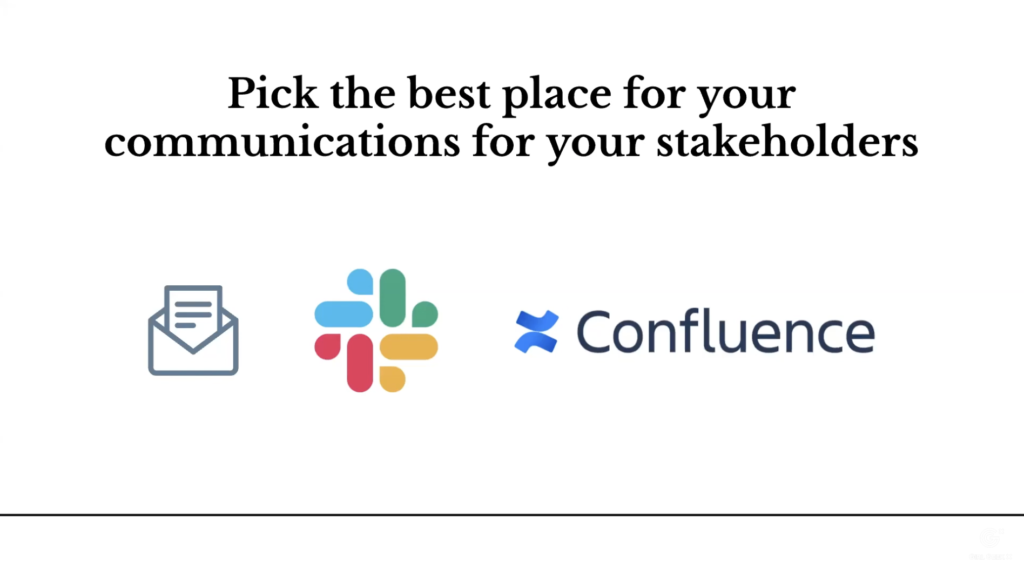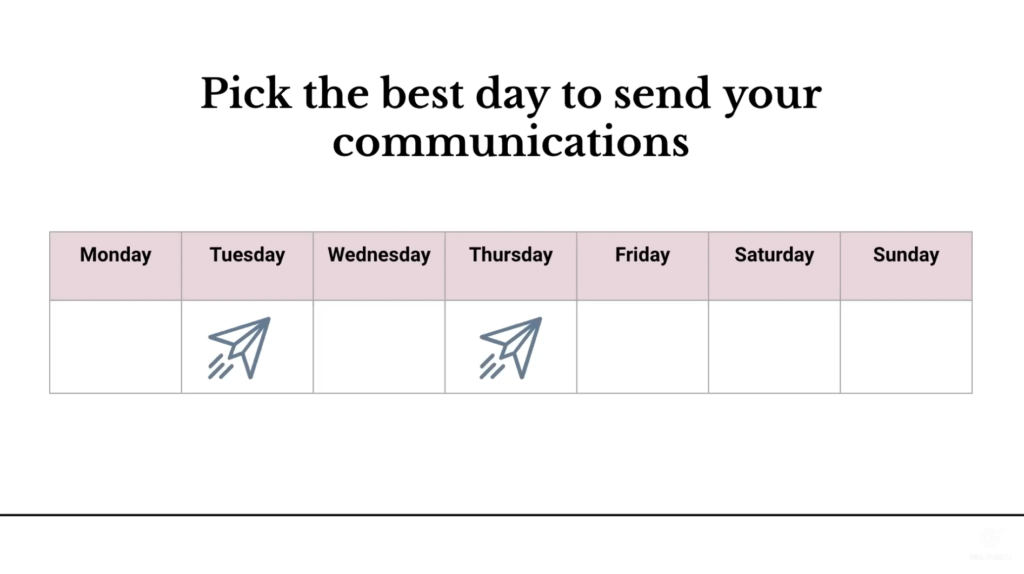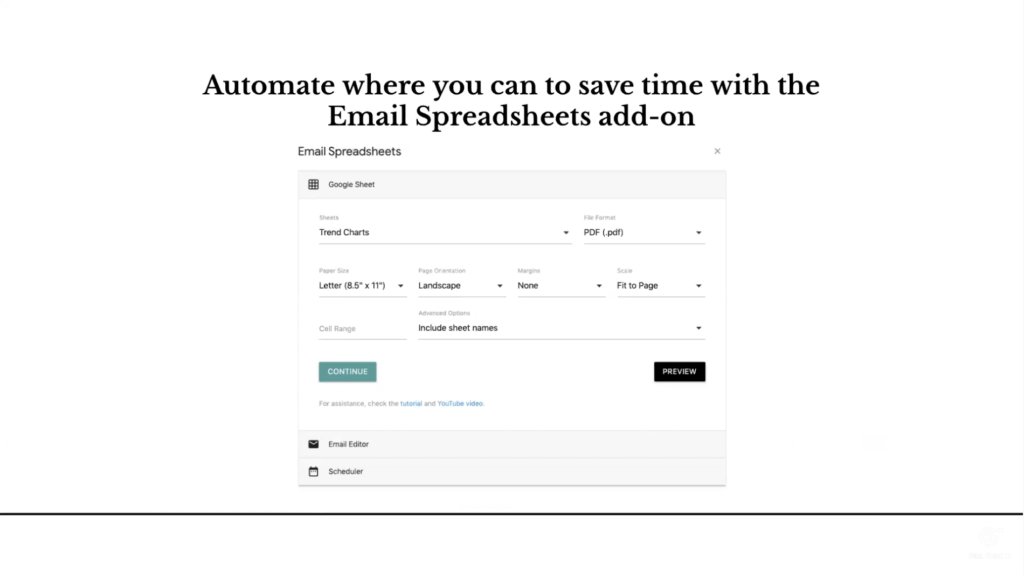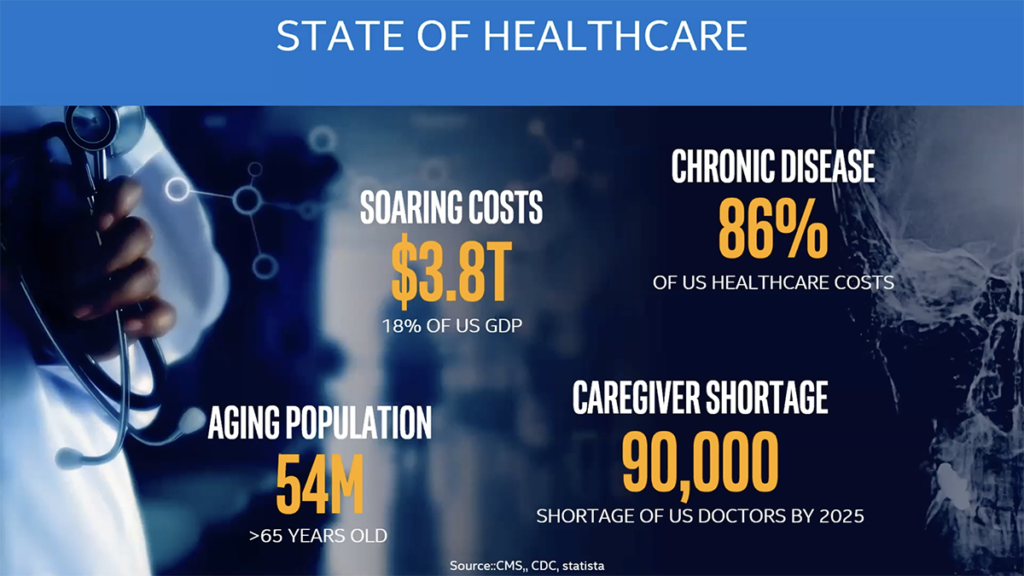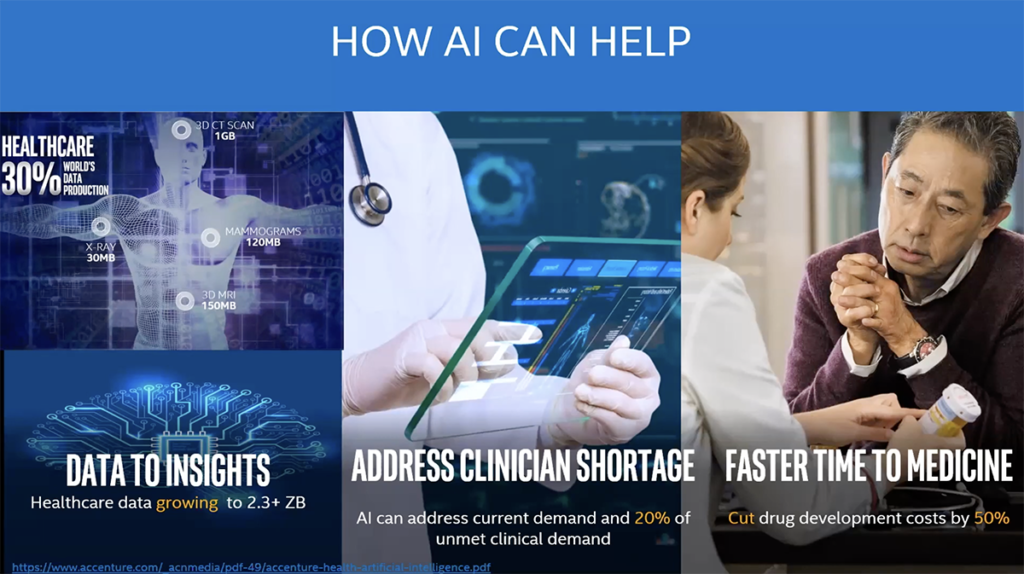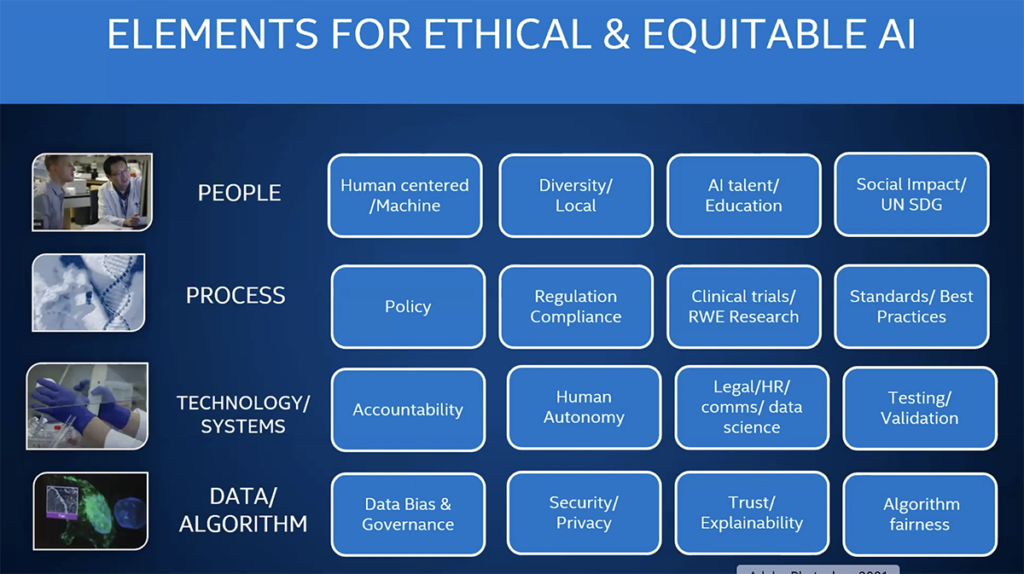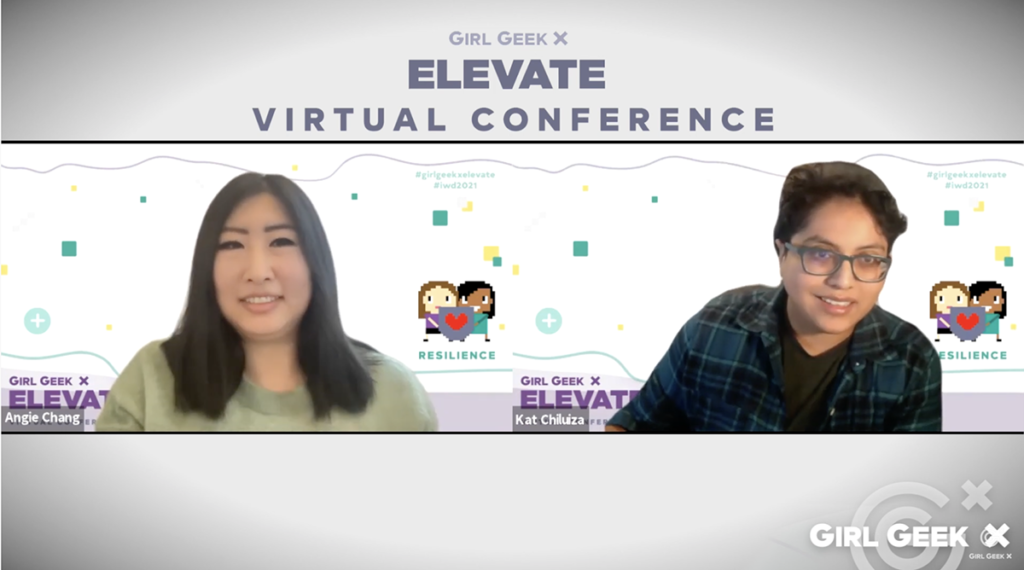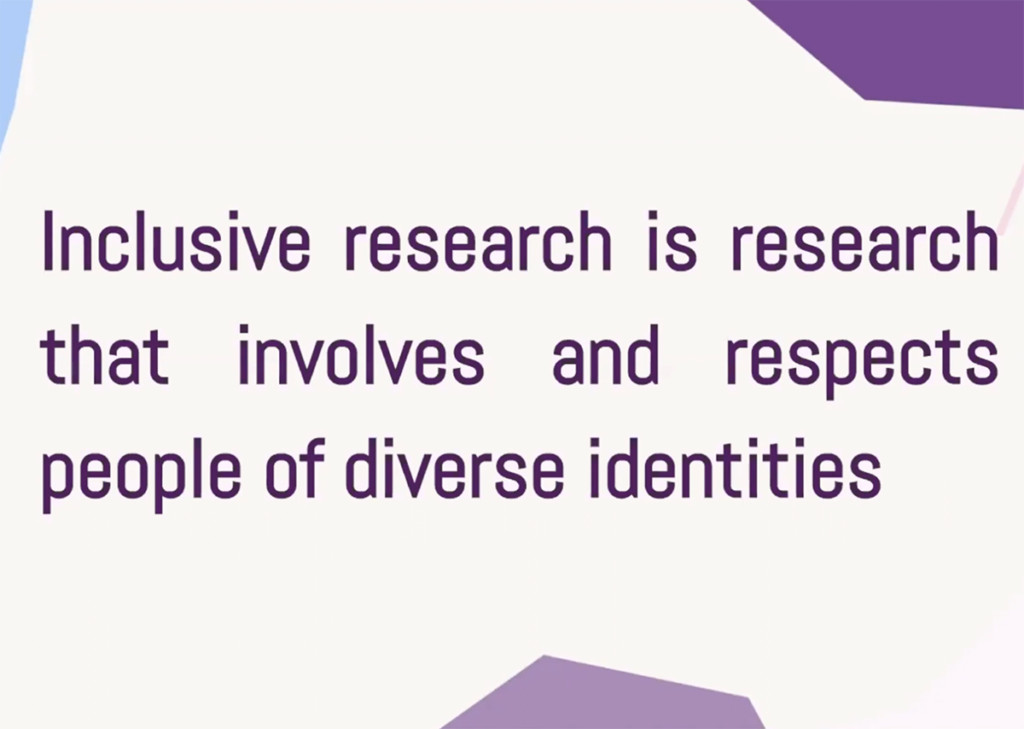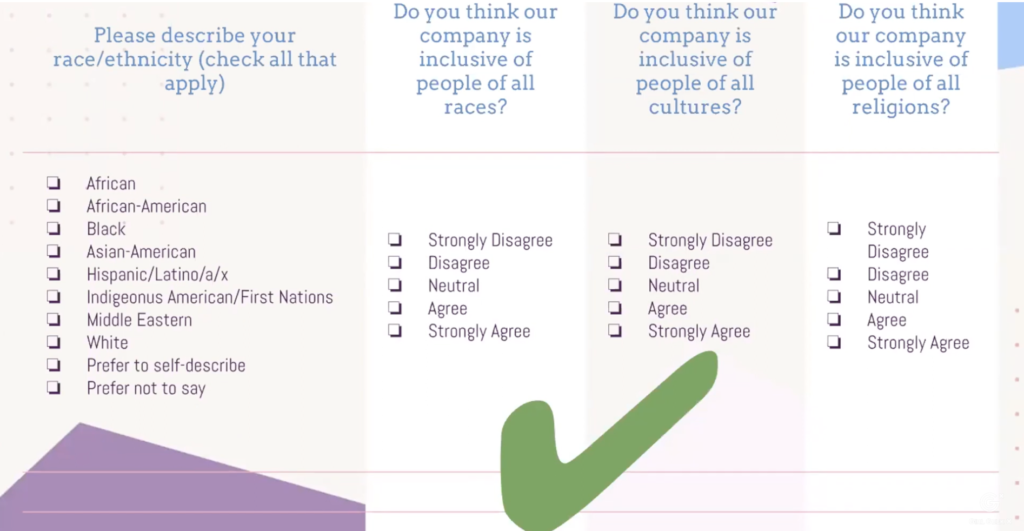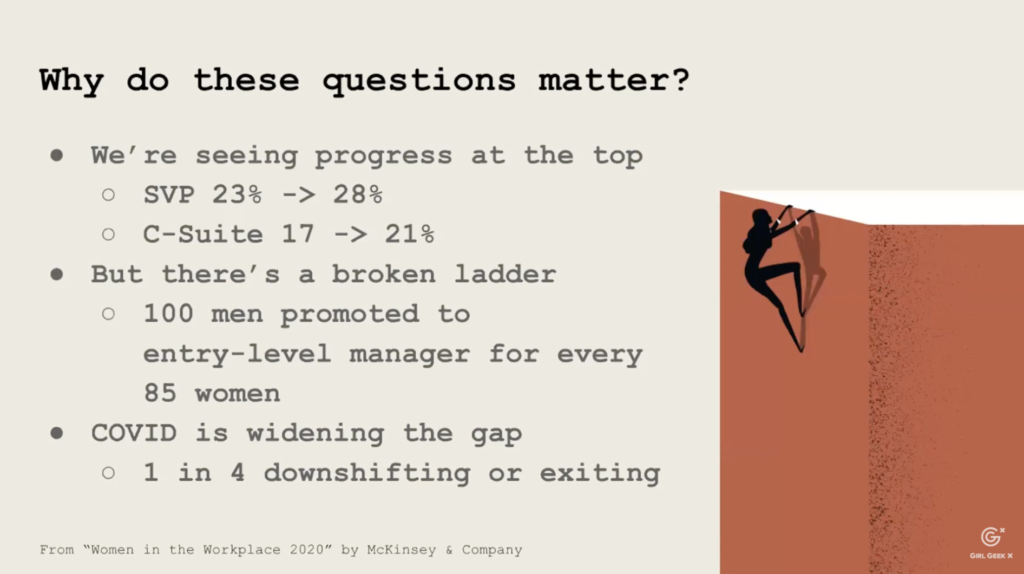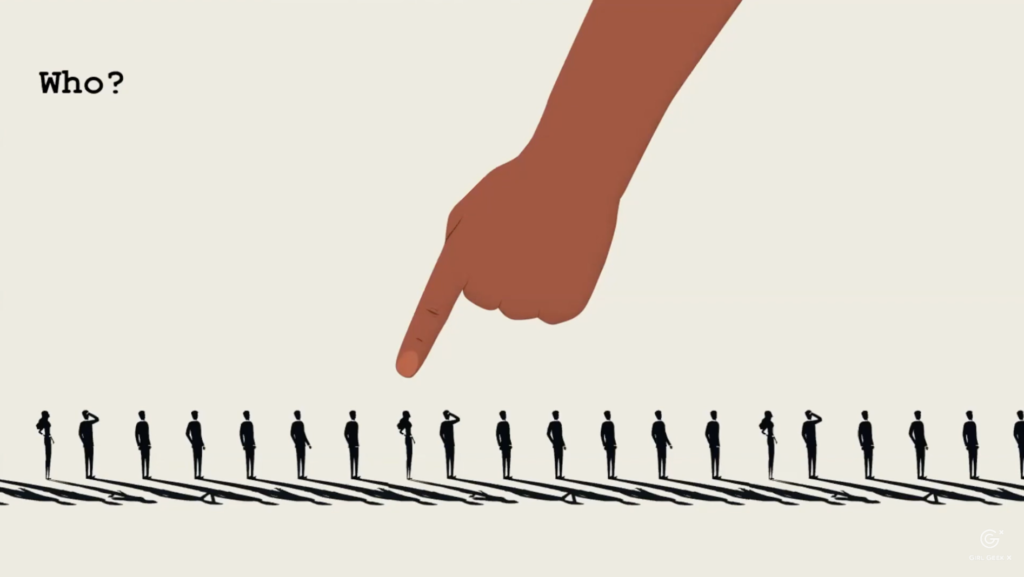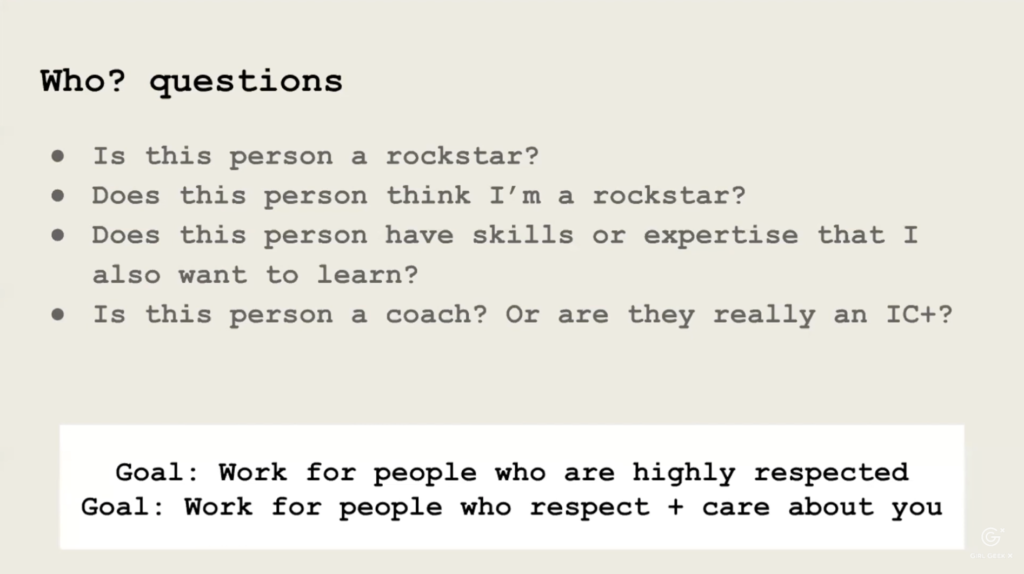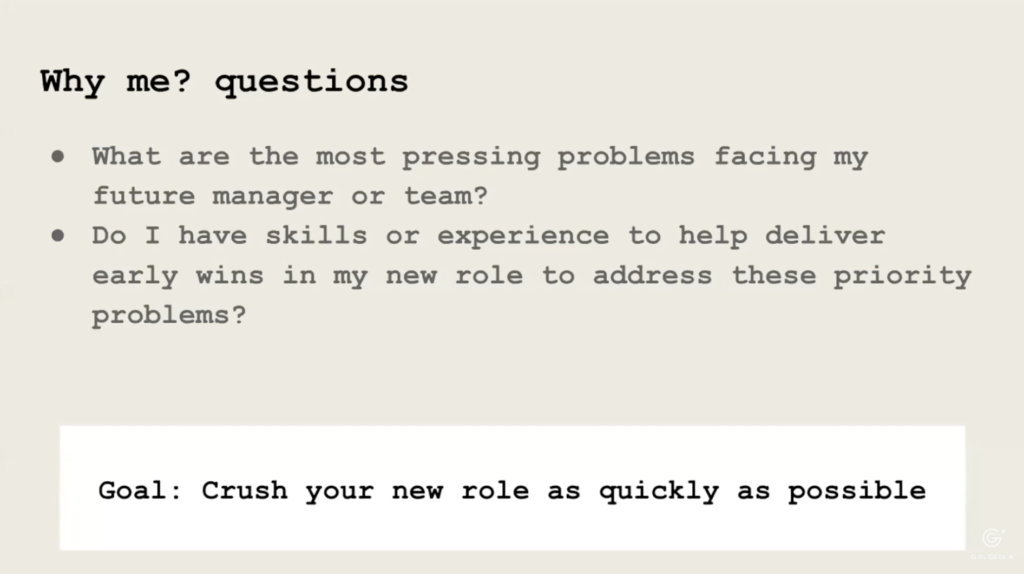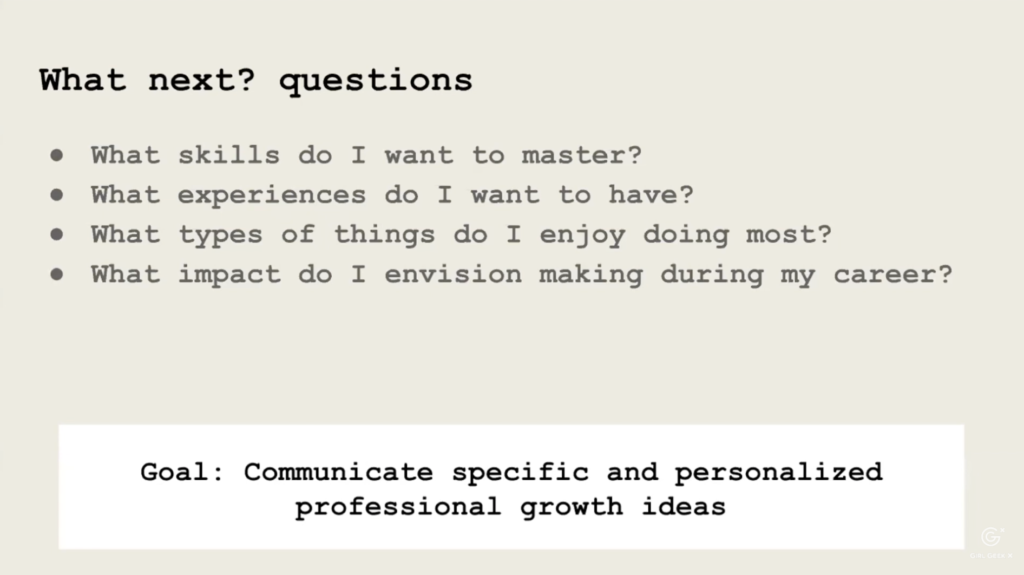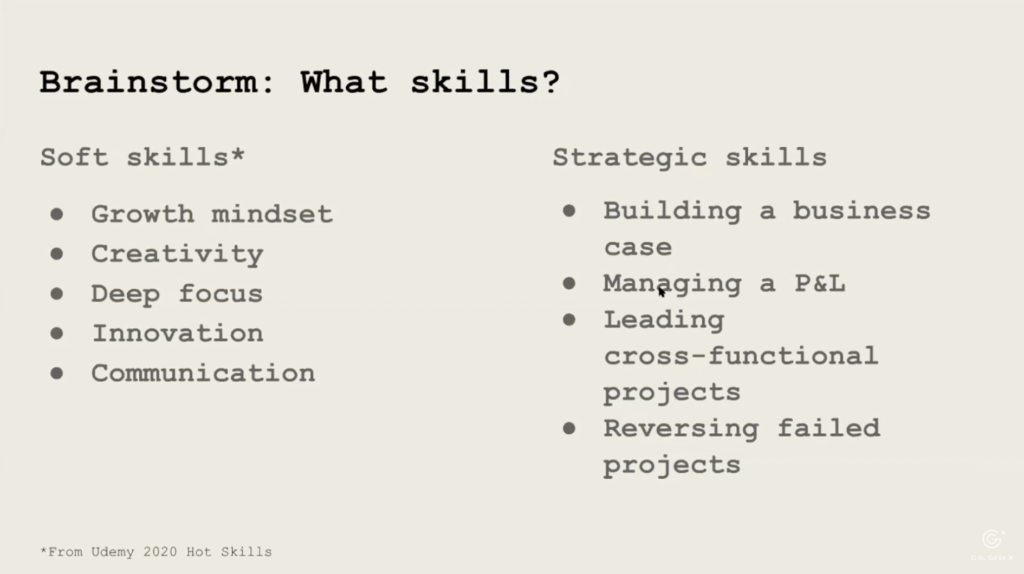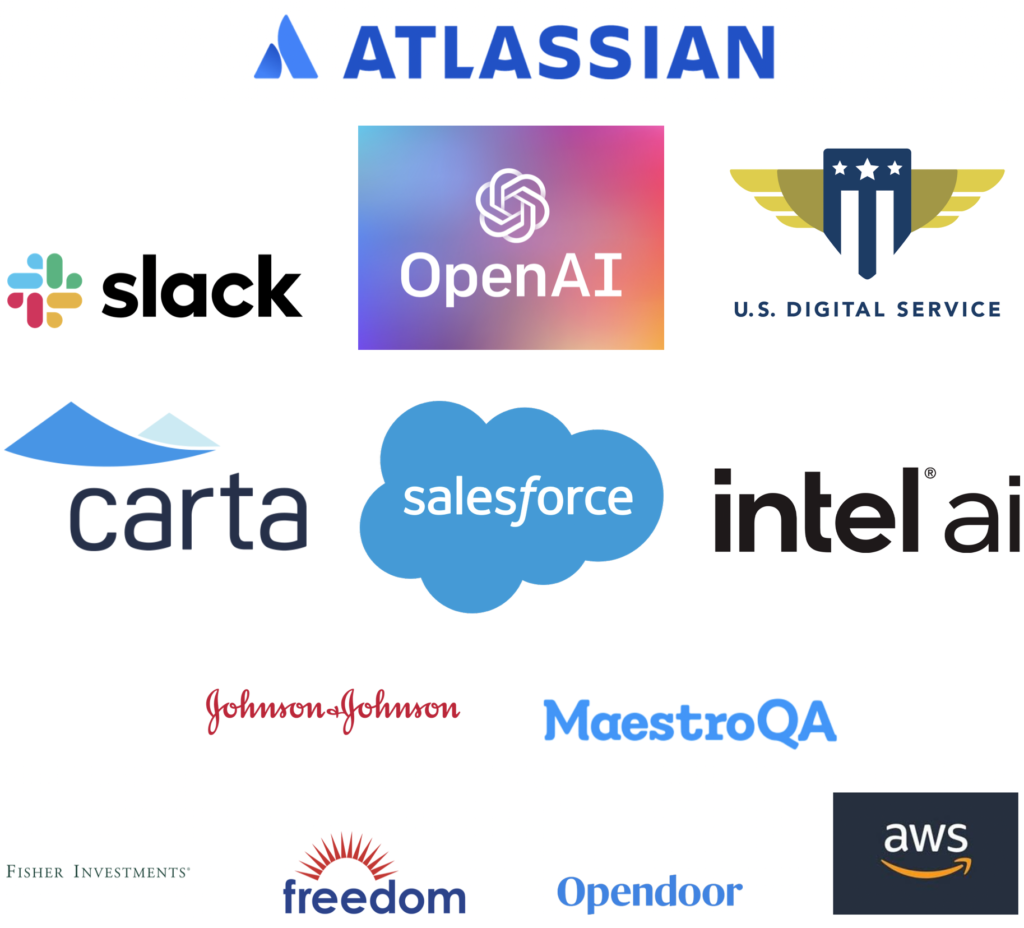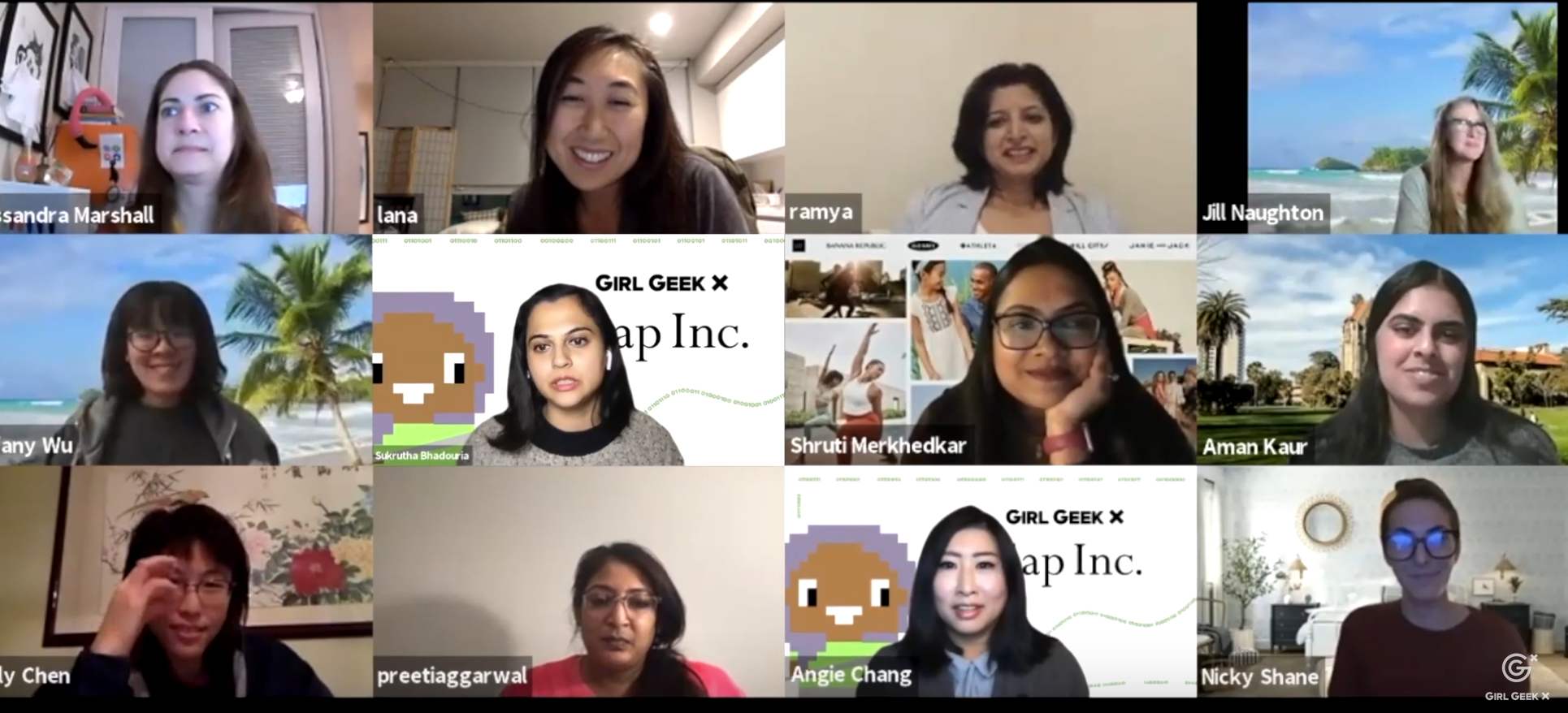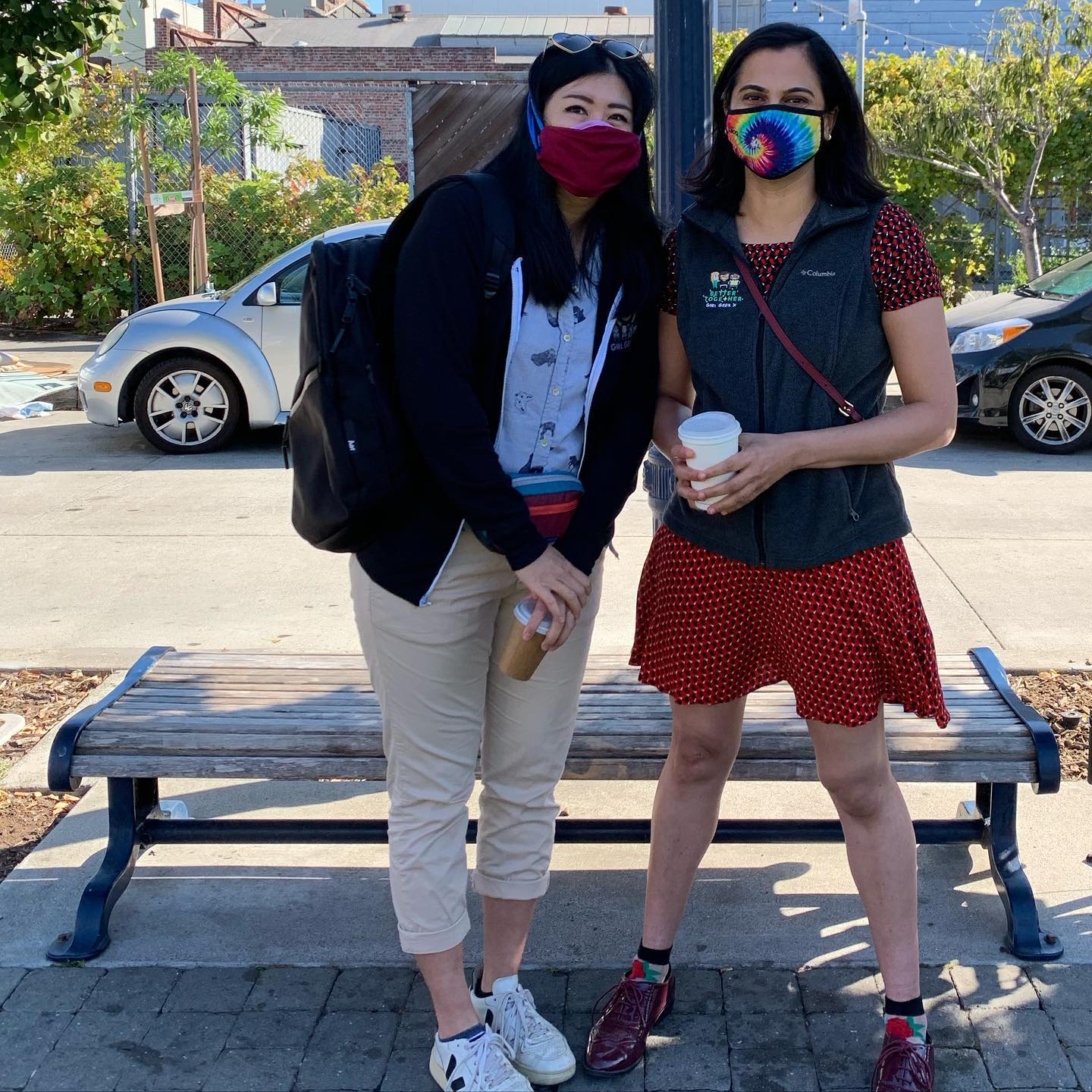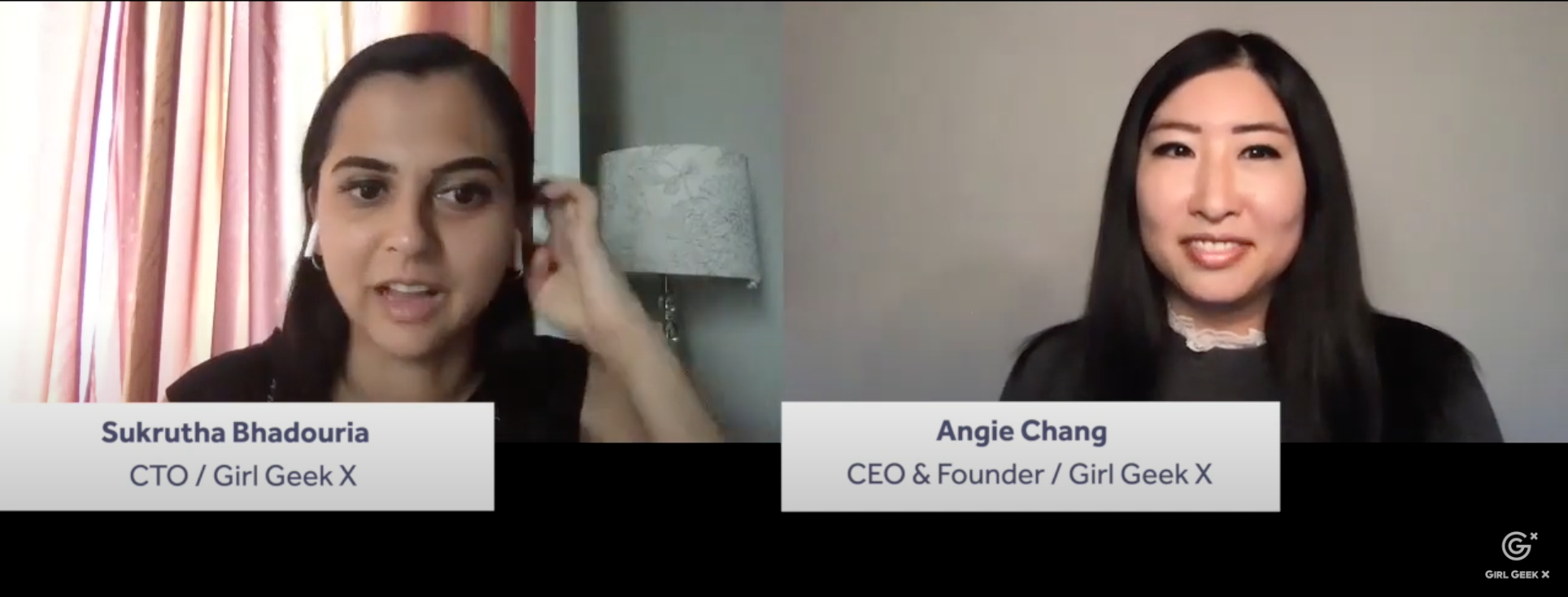Like what you see here? Our mission-aligned Girl Geek X partners are hiring!
Transcript of Cadence Girl Geek Dinner – Lightning Talks:
Sukrutha Bhadouria: Hi everyone, welcome to our Girl Geek Dinner tonight.
Angie Chang: We have an hour of talks tonight for you, from really amazing women at Cadence, and they will be sharing what they’re working on, and also, they have amazing career advice.
Tahrina Ahmed: Tonight, I will talk about Tensilica, a platform that lets computer enthusiasts to create their own [inaudible] specific processors, DSPs, AI accelerator, ensuring most optimized power performance, and area efficiency. And I’m glad to be here, with all of you, my fellow girl geeks.
Sanjita Chokshi: I took the tough decision to press that pause button, in professional side, and today, here I am to share with you all that journey, and what it looked like, coming back to work. Hopefully, it will help some of you, maybe now, or in future.
Rania Hassan Mekky: Today, I’d like to talk to you about a block that has a lot of importance in our daily life, which is SerDes. If you ask yourself what is SerDes, I can tell you that you have kinds of it, at home.
Neeti Bhatnagar: In this world, in this very technical world, in order to succeed in building the next generation engineering product, that ability to zoom into technical details when you need to, and then zoom out to create the larger strategy and vision for the next generation technology is a must.
Alessandra Costa: Think about, if you walk in the hallways of your company, your college, will you be recognized? Are you a familiar face? Will people trust you if they see you? They’ll think, “Oh, okay, so Alessandra, this is a person I can trust.” Lead by example. And so, without further ado, just do it.
Sukrutha Bhadouria: Hi everyone, welcome to our Girl Geek Dinner tonight. I’m Sukrutha, from Girl Geek X, we’re seeing so many people coming in, and joining in right now, and that’s amazing. Angie is here, as well. So, a little bit of back history. Angie and I used to, pre-COVID, commute to Girl Geek Dinners all across the Bay area, so each event, each dinner is sponsored by a different company, and post-COVID, we’ve been doing this virtually. So here we are. Angie, would you like to introduce yourself?
Angie Chang: Yes, sorry. Every time I get in Zoom, I feel like they changed something on me, so thank you. Sorry for being a little late today. My name is Angie Chang, and I am the Founder of Girl Geek X, along with Sukrutha. We’ve been hosting these events in the San Francisco Bay Area for over 13 years now. Thank you, LinkedIn, for telling me all the time how many years I’ve been doing this.
Sukrutha Bhadouria: (laughs)
Angie Chang: [inaudible] That’s because we have so much fun going to different companies, when we’re not in a pandemic, and eating their food, seeing their office, talking to people who work there, and then most importantly, hearing and learning from women on stage, who are working on the tech, who are leading departments, and teams, and sharing their tips and tricks, as well as what’s going on, or the new processes and products that they’re working on. But we also love meeting girl geeks, in the networking sessions. So that’s why we have, now, since we’re in a pandemic, we do these on Zoom, and we have a networking session to follow.
Angie Chang: So, we have an hour of talks tonight for you, from really amazing women at Cadence, and they will be sharing their … what they’re working on, and also, they have amazing career advice. So, I learned something, and I think she’ll share it later, but it was a Girl Geek Dinner that someone learned about a returnship, from. So, I was really excited to hear that people are going to Girl Geek Dinners, and they’re learning new things, and continuing to come back, as speakers. It’s really inspiring to see that. Full circle. What else is new? So … we have-
Sukrutha Bhadouria: What else is new? We have potential … we are going to have a female Vice President of this country, which is huge.
Angie Chang: Yes, Madame Vice President, we … I was like, “Oh my God, we have to do something.” So we made some schwag. If you’re familiar with our cute pixel people, we have a new one, celebrating the woman who is going to be in the White House. So we have some schwag available on our website, we have face masks, so you can be very safe, and you can also buy hoodies, and you can get some throw pillows, bumper stickers that talk about how a woman’s place is in the White House, and the Senate. And women deserve to be in places where decisions are made, so you can find those all on our website, at GirlGeek.IO, and all proceeds for those products will be going to Fair Fight, since we believe in fairness.
Angie Chang: So, I think it’s time to introduce our first speaker, her name is Annamarie, and she is the Vice President of Culture and Talent at Cadence. She believes that employee engagement is not a nice to have, it is a key ingredient to creating a great company, and a high performance culture. She holds a JD from Santa Clara University of Law, and a BA in Sociology from UC Santa Cruz. Welcome, Annamarie.
Annamarie Dunn: I can just speak, if that’s okay? Sorry I’m not able to show up there.
Angie Chang: No worries. I know Zoom is like, changing every week, there’s always some new quirk, that we’re like, “Why is this happening?” So, sorry about that.
Annamarie Dunn: Oh, that’s okay. Well, I really just wanted to welcome everyone, and we’re so excited to partner with Girl Geek and highlight our talented innovators at Cadence, to show how they’re helping us solve technology’s toughest challenges. These six women are strong technologists and leaders at Cadence, and so I’m really excited to hear their lightning talks this evening, and for some of you, this morning, around the globe.
Annamarie Dunn: Just a little bit about Cadence, we are a leader in electronic design innovation, we’re building on more than 30 years of computational software expertise, and we’ve also been on the Fortune 100 Best Companies to Work For list, for six years in a row, and on their World’s Best list, for five years, highlighting our strong culture.
Annamarie Dunn: Women have played an important role in the advancement of technology throughout our 30 year history, and we’re committed to empowering women across the globe, and elevating more women in technology. Thank you so much, Girl Geek, for the chance to showcase the accomplishments and expertise our speakers bring to the field. And with that, I’ll turn it back to you, to introduce our first speaker.
Sukrutha Bhadouria: All right, so next up is our speaker, Rania. I’m going to do a quick intro. Rania is the Principle Design Engineer at Cadence, she will share about SerDes, a hardware IP that is responsible for transmitting and receiving data. Recently it has been used in several serial link applications like PCI Express, HDMI, and USB. Welcome, Rania.
Rania Hassan Mekky: Hello everyone. This is Rania Hassan-Mekky, I am a Principal Design Engineer in the [inaudible] group. Today, I’d like to talk to you about a block that has a lot of importance in our daily life, which is SerDes.
Rania Hassan Mekky: The outline of this presentation is Data Transfer, Examples of SerDes, Applications, SerDes Definition, Advantages and Disadvantage, History and Future of SerDes, and finally, Conclusion.
Rania Hassan Mekky: Data Transfer. Just ask yourself one question. Do you think how much data you are transmitting and receiving every day? The online meetings, the Zoom meeting, downloads, video streaming, it’s a lot. All this come with heavily infrastructure of network and server kit that serves this purpose.
Rania Hassan Mekky: We have one fast train that is responsible for transmitting and receiving all this data, which I’m going to talk about it in this presentation. I call it SerDes.
Rania Hassan Mekky: If you ask yourself, what is SerDes, I can tell you that you have tens of it, at home. It’s not new. One of the SerDes that you already know is USB, Universal Serial Bus. We all have some of it. This is maybe one of the very famous SerDes probably you have some on your hand, right now.
Rania Hassan Mekky: And it got evolved with time, it’s not only for transmitting the USB data and giving power to systems, but also now we can transmit high definition video, on the type C USB.
Rania Hassan Mekky: It’s not only USB, is the SerDes that we have. We have also other application like PCI Express, it’s widely used in graphic cards, artificial intelligence, and- and machine learning. CCIX it’s used in high performance computing. XAUI, it’s widely used in networking, and ethernet. And SATA, which is famous for storage.
Rania Hassan Mekky: So, what is SerDes? SerDes stands for Serializer Deserializer. Serializer means that a transmitter that takes a parallel data and convert it to serial, and send it to a media. Like, let’s say for example, like a chip, like what’s shown in this photo. Say that we’re going to get 16 bin out of this chip, and say that let’s make this as communication channel. So we will send 16 bit per second.
Rania Hassan Mekky: Instead of using 16 dedicated bins to do so, and of course, 16 BCB trace, we’re going to convert the parallel data to serial, and just use one bin, and eventually one BCB trace.
Rania Hassan Mekky: Deserializer is exactly the opposite, it’s the receiver. It will take the serial data, and convert it back to parallel for it goes to processing.
Rania Hassan Mekky: So, the advantage of this technique is less pin count, instead of using the 16 bit, the 16 bin, we’re going to use just one bin. However, we still need to transmit the data at the same amount, so if this 16 bit was meant to be transmit in one second, we still need to get the communication channel fast 16 times, to transmit the same amount of data then the same time.
Rania Hassan Mekky: We again have the first disadvantage, that we have to speed up the communication, less bit communication, and this will come with faster clocks. So, using faster data clock means that we have to increase the power, and here we’re going to have another trade off. Given that that clock will be faster, then we really have to make it running with lower power.
Rania Hassan Mekky: Another thing that we can use to help us with the challenges that we facing from getting the clock faster, and the power lower, that we can move to advanced technologies, like, say, instead of using 65 nanometer technology, for example, we can go for lower, like 28, 12, 16, something like this. And we still, we’re going to have some challenges in the design and the architecture itself.
Rania Hassan Mekky: So, let’s talk about the history and future for SerDes. Here we have a graph, for the data rate versus years for the [inaudible] data for ISSCC 430s. The green dots, these ones, represents PCI Express, the cyan dots represents storage, and the orange dots represents video.
Rania Hassan Mekky: We can see that at early beginning of series, at 1995, there was as slow as just one gigabit per second. And as time just goes, it just keep going faster and faster to the right top of the curve, here that we can [inaudible] and find that the PCI Express now is running at 72 gigabit per second.
Rania Hassan Mekky: Not only getting the clock faster and using advanced technologies and advanced design will help in the development of SerDes. We had also another breakthrough in this technology, which is a change in the modulation. Changing the modulation from [inaudible] to zero, which was the most used modulation in all techniques, to band four, pulse amplitude modulation four, that easily can double the rate. We can go from 28 gigabit per second, to 56 gigabit per second just by changing the modulation. And this will come at the cost of … more advanced architecture and more advanced designs.
Rania Hassan Mekky: This can go not only to 56, getting everything combined, it can lead us to a faster SerDes at 112 gigabit per second, not only making it high speed, but customers need other stuff, too. Needs more flexibility and configurability. We at Cadence can provide a multi-protocol SerDes that has different links that each link can be configured to serve as a certain protocol, like the photo that we’re seeing here, that we have four different lanes, that each one can be configured. Like, one to serve as a PCI Express, one to serve as a CCIX, one to serve as SATA, or whatever. This will provide more SOS configurability, maturity, flexibility and ease to use.
Rania Hassan Mekky: To summarize, you have SerDes at home, I am pretty sure of that. It’s an essential block that we use every day. Not only for the less bin counts, and fewer communication channels, it open the lead for more data to be transferred. More design challenges from faster clocks, needing lower power, using band four, and all this opens a new era for innovation. Thanks so much for your attention, I’m going to give the mic back to Angie.
Angie Chang: Awesome. Thank you. That was an excellent talk on the importance of SerDes. So, our next speaker is Sanjita, and she will be talking about jump starting her career after a care taking break. She is a lead application engineer at Cadence, and she’s a member of Cadence’s first return to work initiative, and she’ll share her experience tonight about getting back into the tech world after choosing to be a full time Mom for four years, and how her returnship, what enabled her to go back to designing cutting edge Cadence tools. Welcome, Sanjita.
Sanjita Chokshi: Thank you, Angie. Hello, everyone. My name is Sanjita. Glad to here with you all, virtually today. I joined Cadence as a returnee, as Angie mentioned. And before I took this role, I have tried my hands at different engineering fields in industrial automation, to wireless, to various software fields, before I finally realized and settled down with ASICs, which is also popularly known as silicon chips.
Sanjita Chokshi: On personal front, I am a mother of two boys, and a first generation immigrant, which means life is something … and my presentation is stuck. Oh. There you go. That’s my life. You’ve got to be the village, for your child, raising them here, and my only ally being my husband, life was full and I somewhere felt like I am not able to juggle enough and give the kind of attention I wanted to give to my kids.
Sanjita Chokshi: At one point, when they were going through crucial transitions in their lives, I took the tough decision to press the pause button on professional side. And today, here I am to share with you all, that journey and what was it like coming back to work? Hopefully it will help some of you, maybe now, or in future.
Sanjita Chokshi: What was it like? As I look back, I realize the most important part of this whole journey was managing my thoughts, and my decade long meditation habit has played a very crucial role in that aspect. Constant thoughts of, “Oh, what will people think of me? Am I making the right decision? Am I losing out on my career?” This whole circle of fear, negativity, anxiety, meditation really helped me to keep [inaudible].
Sanjita Chokshi: Over time, it was multiple different times, at points of time, that I had to remake that decision and reevaluate my choices. At the end of it, I realized one thing. I became completely unapologetic about the choices I had made. I stopped explaining to people why I took the break, why I chose to be a stay at home Mom. I could accept within me, that I have done this for myself and not for others. And all that was thanks to a meditation. I strongly recommend for any challenges you’re going through in life, this was one thing that worked wonders.
Sanjita Chokshi: Realize one more side effect of being on a break, I had a lot of time for myself. I could dig deeper, and that was the time when I really spelled out and embraced my strengths. As a result, when I decided to go back to work, I was very clear on what I bring to the table, what I have got to offer. That positive outlook, that confidence, my own confidence in myself was something I felt was the very foundation, when I decided to go back to work.
Sanjita Chokshi: More than any other [inaudible] and catching up to technology, this was the part that really gave me the jumpstart. One more thing that I would like to mention, I feel looking back, that helped, was continuous learning. As I was on a break, it was not technology, but then I learned a new language, I picked up gardening, to permaculture. At one point, I even considered a career as a edible landscape designer. I explored spice mixes, I picked up things I knew nothing about. That was the joy of learning.
Sanjita Chokshi: Now, as I join back, I am learning new tools, new methods, new stuff every single day, and all those things together, I feel is playing very crucial role, as I come back from my break, to start the journey again, in the corporate world. All in all, this is what I was, as a result of all these three things, in my break.
Sanjita Chokshi: As I decided to come back, get back to work, my very first thing was, I started going out, and when I say it, I really mean it. I attended almost 40 events, Angie was mentioning about Geek Girl. Over six months, 40 events, Geek Girl was on top of that list. Back in the day when life was more normal, and events were in person, it was a lot more fun. I look forward to see how it works in breakout rooms, now.
Sanjita Chokshi: I attended a lot of women-centric events wherein I got to meet with the whole range of women in tech, which was pretty unusual experience for me, because all this time, wherever I worked, there were very few women around me. So this was a really liberating experience. I learned a lot on semiconductor focused events, as well, on where the world is going, that gave me a perspective on how market has moved and where things are going forward.
Sanjita Chokshi: At the same time, I connected with a lot of people, learned a lot from other women. At the same time, learned about returnship initiative, which I knew nothing about. I realized, this was something … for people who don’t know what this is, lot of corporates have started programs wherein, it’s like internship, but meant for professionals who have prior experience and they have decided to take a break, to take care of family. So it was tailor made for me.
Sanjita Chokshi: Another thing that I did, and discovered more on LinkedIn, there is a setting that you are open to opportunities. As I turned that on, recruiters started reaching out to me. A few of the things, already I could see there’s a lot of traction in the market. I had to just prepare myself, and I knew that it was a process of going and finding the right match.
Sanjita Chokshi: I started talking to people and I realized, even when there is a 10 or 20% match, they are willing to engage with me, and talk forward. As I was going through all those experiences, I realized, it’s only a matter of time when I find my right match. And sure enough, I see a rec one day on LinkedIn, from Cadence, which was 100% match. I look at the job description, I look at the requirements, the minimum three years of break, three years of experience, and two years of break. I fit right in.
Sanjita Chokshi: By then, I was already ready to face that interview, and I knew that the job is going to be mine. What was life at Cadence like, as I joined? It was a 16 week program that gave me perfect time to ramp up where I had left off. In my previous job, I was a design engineer. I took customers’ designs, made it work on the silicon, as [inaudible], and the goal was to make it first time right. And I had met it 100% success rate.
Sanjita Chokshi: Now, in this job, I was offered to do the same, make it happen for the customers who are using Cadence’s state of the art technology leading tool set. So, I started with the product training first, and then I got on-the-job training, wherein I got to see, A, what is the real life experience in this job, as an application engineer, which was really going on the other side of the table.
Sanjita Chokshi: I found one thing, working at Cadence, that was one Cadence – one team, this motto that they are writing trickled down everywhere, across the teams. It was about collaboration and achieving success as a team. And I felt right at home, being in that culture. So at the end of 16 weeks, when management offered me a full time position, it was a no-brainer, for me. I knew this was the place where I’m going to be happy.
Sanjita Chokshi: Another thing that drew me was management’s commitment towards employees. This is real, they were not just talking about it. I could see it, they were walking the talk. Second thing was, focus on women. This was my first job, actually, never seen anything like this in any other company, the kind of focus that is there, on women. I am yet to finish my five months in this company, and this is the sixth women-centric event that I am attending. That tells they’re really walking the talk.
Sanjita Chokshi: All you ladies out there, one thing I would say is, make the bold choices, be confident in what you’re choosing for yourself, and go for it. Cadence is hiring, if you are matching, whether any of the profile you have the skillset, this is a place to be. One more thing I would like to put out there is returnship. See if your company is also open to starting programs like this. It’s a win/win for both sides. Down the road, it will offer professionals like us that crucial choice at some part in our life when we feel that juggling of too many balls is too much. Even the professional life ball can also be put down, temporarily.
Sanjita Chokshi: So with that, I would like to thank you all. And thank you, Angie, for giving me this opportunity here, and the platform.
Sukrutha Bhadouria: Thank you so much, that was such an interesting and personal story to share. We always are hearing more and more about people wanting to take a break, but then being afraid about how that will impact their career also. It’s especially important to share your side of the story, as well. Thank you so much.
Sukrutha Bhadouria: All right, so our next speaker is Tahrina Ahmed. Tahrina is a senior director at the Design Enablement Group in the Tensilica IP group at Cadence. So yeah, welcome Tahrina.
Tahrina Ahmed: Good evening, everyone. I’m Tahrina Ahmed, senior director of Design Enablement Group at Tensilica IP, in Cadence Design Systems. A little bit about myself. My academic career and professional background is in computer architecture. I completed my PhD from Stanford University, where my thesis was on distributed domain specific architecture.
Tahrina Ahmed: Well, from very young age, I had keen interest in math and logic that later led on to my love for engineering. And I’m glad to be here with all of you, my fellow Girl Geeks. Tonight I will talk about Tensilica, a platform that lets computer enthusiasts to create their own domain specific processors, DSPs, AI accelerator, ensuring most optimized power performance and area efficiency.
Tahrina Ahmed: In this presentation, I will cover the basics of embedded systems, followed by the definition of hardware and software co-design. Then I will go over a concise technical overview of Xtensa architecture, a quick guide to build and customize Tensilica processors and DSPs. And finally, I will end with some PPA data.
Tahrina Ahmed: Tensilica develops IP blocks to be included on the chip designs, such as a system on a chip for embedded systems. So, what is an embedded system? An embedded system is a microprocessor based computer hardware system, with software that is designed to perform a dedicated function, either as an independent system, or as a part of a large system.
Tahrina Ahmed: Some of the key characteristics of embedded systems are low cost, lower power, with high efficiency, high reliability and minimal user interface. Cadence Tensilica processors and DSPs are based on Xtensa architecture that exploits hardware-software co-design.
Tahrina Ahmed: To implement hardware and software co-design, the developers need to specify, explore, refine a flexible design strategy. It enables hierarchy of models at different abstraction levels, with hardware and software iterative interaction. After evaluating PPA trade offs, the developer finalize the design.
Tahrina Ahmed: Essentially, two major requirements for the design practice are first, each developer to embed their own design specification. Second, hardware with optimal PPA, tuned for application software.
Tahrina Ahmed: So now let’s delve into Tensilica solutions. Tensilica based architecture is a 32 bit reduced instruction set architecture, with low gate count design, which is around 20K gates for a five stage pipeline. The base instruction set supports 24 bit, as well as 16 bit encoding. Thus, the modeless 24/16 intermixing provides great code density.
Tahrina Ahmed: This architecture comprises efficient branch instruction. For example, combined compare and branch, zero-overhead loops, etc. For bit manipulation, it [inaudible] funnel shift, bit test and branch, field extract operations, etc. As mentioned earlier, that Xtensa is a flexible architecture by design. The robust nature of this architecture allows designers to scale from tiny low powered micro-controller to high performance VLIW controlled CPU. Designers can extend performance further, with application specific single instruction multiple data, very long instruction work, and IO features.
Tahrina Ahmed: So, how can you build your own unique processor and DSPs? If you have access to the basic [inaudible], using the Xtensa processor generator interface, you can choose from pre-configured templates. Then simply configure utilizing the click button features, and only include what your application needs. For example, the application could benefit from half precision, single precision operations, single or multiple load store or FMAO needs. Similarly, you’ve got a very wide range of data types, from eight to 64 bits. You can choose from 20 plus application specific DSPI cells.
Tahrina Ahmed: Finally, you can customize adding instructions, and/or IOs to meet application requirements and optimize and differentiate. So the bottom line is, with Tensilica solutions, it is easy to build, easy to optimize, easy to program. You get one development environment, with automated tools generation. And you always get to write your program in C, you don’t have to worry about assembly coding.
Tahrina Ahmed: So here’s some of our automation utilities that make the development experience seamless for processor designers. Essentially, you start with Tensilica ID that provides you with base processor, which is dozens of templates for many common applications, in addition to pre-verified options. For example, off the shelf DSPs, interfaces, peripherals, debug, etc.
Tahrina Ahmed: You can customize your own IP by creating your own instructions, data types, registers, interfaces. Then using the [inaudible] interface, within minutes you develop complete hardware design, and simultaneously, you have access to advanced software tools. Even customization is is highly coherent and straightforward with Tensilica Instruction Extension Language, that is also known at TIE language. This high level language helps you to describe hardware and software aspects of instruction extension.
Tahrina Ahmed: The TIE compiler generates software tools such as compiler, debugger, simulator. It also generates RTL and implementation flows. So now I’m going to show you this chart, that illustrates how by tuning processor ISA for application specific characteristics, developers can achieve PPA efficiency.
Tahrina Ahmed: Considering this best guess scenario, which is ATM header error correction application, by including less than 2K additional case, developers can get greater than 10 access data. How convenient is that?
Tahrina Ahmed: Even the use cases that require higher ideational date count suggest [inaudible 00:35:27] space conversion, by adding around 10K additional gates, you can still achieve around, in fact more than 4x speed up. Finally, when do you see our Tensilica processors and USBs? The good news is, our LX and NX controllers, and audio vision RLC DSPs have footprint in various products, in multiple segments, many of which perhaps you are using in your every day life.
Tahrina Ahmed: For example, in automotive, Bluetooth headsets, digital TVs and home entertainment systems, smart phones, smart speakers and [inaudible] devices. Yes. You name it, you could find Tensilica here.
Tahrina Ahmed: And with that, I would like to thank Girl Geek for giving me the opportunity to present Tensilica solutions in this event, and thank you all for joining this session. Back to you.
Angie Chang: Thank you, that was an excellent talk. So, our next speaker is Alessandra, who is the Vice President of North America Field Engineering at Cadence. She will share her journey, and what she learned along the way, with advice on leadership, insights on the importance of diversity in technology, and the inspiration to help you own your own personal brand to drive your career. Welcome, Alessandra.
Alessandra Costa: Good evening, everybody, and yeah, as was mentioned, my name is Alessandra Costa, and I manage the North America team, and I’m very proud to call Sanjita and Julia two of my members of my organization. Great presentations, you ladies were phenomenal.
Alessandra Costa: So, I’m switching a little bit, the gear from the technical side and actually, I am going to take you on a trip, on a trip to Africa. And this was us, my husband and I, in 2002. It was Fall, and we decided to go on a trip to Africa, and more precisely, Namibia. So we were extremely excited about the prospective of being gone for a couple of weeks, and then the week before leaving, I found out I was pregnant with my daughter.
Alessandra Costa: So, we really wanted a child too, but just we didn’t want the first trimester to coincide with the trip in a land that was far from home. There was a lot of debating, and lot of agonizing over the decision, and then we decided to go. So, we were reassured that the weather would be cool, because it was sort of Spring, there. We were actually going with a group of friends, and some of them I had known for quite some times, and one of them I didn’t know, at all.
Alessandra Costa: Then off we went, and unfortunately once we got there, things were quite different from the way we imagined. So, first of all, the temperature was the hottest Spring that they had in like, the previous 50 years. So it was extremely hot. The roads looked like the one you see here. Actually, some roads are paved with salt, and the terrain is not regular at all. The company, especially the person I didn’t know, was nightmarish.
Alessandra Costa: I would wake up in the morning, super hot, dry, but still super hot. I had the morning sickness. I was completely miserable and the people around me didn’t make my life better. So, every time I woke up, and you might imagine that the first thing I could dream about, could be some oasis along the way, or a final destination, in a hotel. No, all I was dreaming about was potato chips.
Alessandra Costa: Well, if you think about it, potato chips are salty, and that’s all I craved, actually, in the morning. I’m not a big fan of junk food, but I have to tell you, since then, potato chips have become my comfort food, actually, when I travel. You can imagine, my husband and I in this larger group, and every morning, being miserable, and every morning, just looking for the next stop, to get some chips.
Alessandra Costa: And some of the brands were completely unknown to me, and although I am fully convinced that Simba is a very nice guy, I was not willing to trust my morning sickness to a brand that I didn’t know. Okay? So, of course, in the shelves, among the unknown brand, there was something that I could easily recognize, and I felt comfortable with, which is Lays, of course.
Alessandra Costa: And why did I go for Lays? It’s because, again, it’s something that was familiar to me, because of course, in the US we see a lot of it. And it’s something I could trust. Of course, it’s kind of funny to trust junk food. But anyway, it’s something I could know, and I felt comfortable buying and eating.
Alessandra Costa: Now, talking about recognizable brand, can you guess the content of this can, even if you don’t read or speak Arabic? Normally when I do this presentation live, everybody recognizing this can, a can of Coke. Which is really interesting, because it means that their marketing is phenomenal, because the only thing that you can recognize really, again, if you don’t speak Arabic, is the fact that it’s a red can, it’s a particular red, right? But still, red can, white writing, and the swirl on the right, right?
Alessandra Costa: So, I think they do a pretty good job at just nailing these colors and the logo in your brain. If we look at the most valuable brands according to Forbes, which is quite a reputable source, these are the top 10. One thing that is really interesting to me, is that out of the top 10 brands, lots of them, actually, the majority of them, are actually high tech companies, which is very different from what was the reality maybe like, just 10 years ago.
Alessandra Costa: There are these big tech company that really came to the forefront of the scene, and they’re able to brand themselves to the public, and to possible employees. But what does it mean? How did Forbes rank the companies? It was based on three criteria. First of all, the financial performance of the company. Reputable company, good revenues, good margins. So that was the first thing.
Alessandra Costa: The second thing was really the weight of the brand on customer choices. Think about me, in Namibia, potato chips, I went for Lays, right? So, the brand definitely had a weight on my choice. Third, which is really interesting, is the premium, the price premium that companies can charge because of the brand. One example I like to bring up every time is, think about the Louis Vuitton bags. Especially the one with the monograms, the ones that are made of plastic, they are sold for hundreds, sometimes thousands of dollar, and it might be very high quality plastic, still plastic.
Alessandra Costa: Now, why branding is important, we talked about recognition, the can of Coke and that you can recognize it just by virtue of the colors, and of the brand, of the logo. Trust, we talked about me trusting junk food, then trusting potato chips. But also, financial value, meaning how much financial value is the brand bringing to a company. And last but not least is also inspiration. No matter where you stand on the political side, if you think about Kevin Kaepernick here in North America, he became the image person for a while, for Nike, and that was decided based on his political stand.
Alessandra Costa: So, companies spend a lot of money to make sure that you recognize their brand and you associate their brand to what they stand for. Well, how about people? That’s me when I was still going to the hairdresser, before COVID. If you think about yourself, and if you work for a company, or you’re in college, think about if you walk in the hallways of your company, your college, will you be recognized? Are you a familiar face in the environment that you work at? Will people trust you if they see you? Will they think, “Okay, so Alessandra, this is a person I can trust. I know she made some decision. I know that she delivers what she promises.”
Alessandra Costa: Financial value. If I think about Cadence, does Cadence see a financial value in me, and on the flip side, is Cadence willing to pay me the right amount of money for the job I do? And then, last not but least, let’s go through inspiration again. Will I be an inspiration for people around me? I certainly hope so, and especially for women in my organization and also outside of my organization.
Alessandra Costa: I want to share a few things that you ladies should focus on when you think about your brand. This is a presentation that normally I deliver like, in half an hour, 40 minutes, and so I am much more than this, but I just condensed, focusing on the most important thing. The first thing is really understanding the priorities of the company you work for, the group you work for, the priority of your manager, even. And then align what you do with the priorities of the companies.
Alessandra Costa: Sometimes, we like going and trying science experiment and we fall in love with a project, we fall in love with a topic, but then, does it matter for people around you? Does it matter for your manager? Does it add value for your company? An example I give, believe it or not, I love knitting, and I love also crochet. I do beautiful things, I believe so, right, that these things are beautiful. I do a lot of blankets, I have one in process, and I like to do it because I can see the result of what I do. There is something that I can touch, right? While my job is kind of immaterial. I don’t work on something and then I can just hold it in my hand.
Alessandra Costa: I do beautiful blankets, I make beautiful blankets. Perfect craftsmanship. Do you think my manager, who by the way, is the VP of Sales, of North America. So he carries basically half the revenue, of our company. Do you think he cares, if I show up at the one on one with my blanket and say, “Look, I’ve been working on this. Are you proud of me?” Of course he doesn’t care. Of course, this is an exaggeration, but every time you do something, think, “Is this valuable for my team? Is this valuable for my company?” And align.
Alessandra Costa: There are ways to align. You can listen to communication meetings, I mean, big organization, we have communication meeting, that our CEO, Lip-Bu Tan holds, we have communication meetings inside, smaller organization inside groups. In fact, my manager had a communication meeting this week. So listen to that. Learn the lingo. Learn what is important and one thing, and for especially the ladies that are part of my team, they know, I push everybody to listen to the earning calls. So, if you work for a public company, they have earning calls where they share, typically the CEO and the CFO, they share the data on how the company is doing. But above all, the analysts ask a lot of questions, about the company.
Alessandra Costa: And so, you’re going to learn very quickly, what matters to the executive of the company, and you’re going to learn how to translate those care abouts to your daily life. Okay? So, understand priorities and align with the priorities of your company. The second one, this is very much a female trait, I hear all the time, for example, when somebody tries to apply for a job, women typically, if they don’t check all the boxes, if they’re not perfect for every single thing, every single requirement of the job description, they don’t go for it. It is this quest for perfection that sometimes is really career limiting, for women.
Alessandra Costa: What you see here, this symbolizes to me the quest for perfection, sometimes imperfection being better than perfection, and this is a pottery technique that is typically in Japan, where something breaks, they fix it and yes, it was broken, but it looks even more beautiful than the original item. So, overcome the sense of the quest for perfection, because that’s detrimental to what you do.
Alessandra Costa: Last but not least, I am asked frequently, how do I change at work, compared to my life at home? Of course there are differences, I mean, the way I express myself, I do much more yelling, at home. You can imagine, right? Italian family. My husband is actually American, but two Italian women. One 100% Italian, the other 50% Italian. So there is a lot of yelling. I don’t yell at work. I try, actually, to customize my message depending on the people I talk to.
Alessandra Costa: But I myself, every single morning, I get up. I wash my face, I look at myself in the mirror, and I bring myself to work. I don’t bring another person, an avatar of what I am in real life. Okay? So, by the way, this is Dr Jekyll and Mr Hyde. Now, there is much more than that, for sake of time, I’ll jump to the next thing. Everything I said, if you think about it, it applies equally to men and women. Why am I so keen on giving this presentation to women?
Alessandra Costa: It’s because we’re still a little bit behind, in the way we are represented, and so there is still a big gap between the opportunities we are given, the way we are paid, the political representation that we have, and the one that men have. So, again, for sake of time, I’m not going to go too much into this, but there is the World Economic Forum, it’s an international organization, measures actually what is the gender gap between men and women. As you can see, this year, so we’re talking about 2020, a woman is, let’s say, “worth” 69% of what a man is worth.
Alessandra Costa: So, we have similar opportunities when it comes, for example, to education. But when you look at economical participation, and above all, political empowerment, then we’re very behind. And so, if you think about how big is the progress that we have made since 2006 when they started measuring this, it’s only 4.6%. It’s a very detailed report. I encourage you to look at it, and also the data is split by country. We’re not doing very well in US, and we’re doing even more poorly in my country of origin, Italy.
Alessandra Costa: And talking about political representation, this is G20, few years back. The picture on the left is the original, the one is with men photoshopped out, three women are left. And one is the Queen, by the way. This is the G7, last year, G7 is the meeting of the seven most industrialized countries, in the world. And they send their representative, and here they are. How do you feel about being represented by these middle aged men? So, these people are speaking also on your own behalf.
Alessandra Costa: But alas, I had to change my presentation, because I had sent it a few weeks back. There’s a light at the end of the tunnel, and yes, Kamala, finally. This Vice President Elect, Kamala Harris. I was listening to her speech, and this is maybe the quote that impressed me the most, because it’s a quote that speaks about ambition, in a positive way, not in a negative way. Speaks about conviction, and speaks about seeing ourselves as deserving, and as having opportunity, even if other people don’t think we do, because they have never seen that before.
Alessandra Costa: But you know, women can have a place in technology. These are two women working on the ENIAC, the first computer that was created. But then what happened, women have sort of disappeared from the technology scene, and in my opinion, it starts at very early, it starts in childhood. If you Google “Best Toys for five year old girls,” look. I mean, it’s all pretend play, and it’s shopping carts and cute girls’ pots and pans. And nothing wrong with cooking, I like cooking. And on the right, look at how much more the toys on the right can influence decisions later in life. Okay? And why can’t men, can’t boys play with pot and pans and learn how to help around the house?
Alessandra Costa: Now, talking about women in high tech, the numbers are not great. 25% of computing jobs are held by women, only 25%. 50 plus percent of women are leaving their jobs in mid-career, and so I’m very proud of the returnship program that we launched, because we could find phenomenal application engineer like Sanjita.
Alessandra Costa: And in Silicon Valley, which is very liberal and advanced, only 12% of engineers in start up are women, and last but not least, only 11% of executive positions in Silicon Valley are held by women.
Alessandra Costa: Anyway, so I don’t want to just sit here and admire the problem, and just close with like, this sad and somber note, because there is a lot we can do. We can support our sisters. I hate the hearing, when that the worst enemies of women are women. So … I don’t buy into that. It comes from … think of scarcity, as if there was a limited number of resources, and if a woman makes it, the other one cannot make it. It’s a fight, with elbows in our faces. I don’t buy into that, because the possibilities are out there, and we need to be able to grab them. Share with younger women the passion for what we do. There are plenty of opportunities to be a mentor, too. I’ve been a mentor in my daughter’s school. Be vocal for women, who do dare to do it. It happens in meetings, it happens everywhere. We are interrupted, people talk over us.
Alessandra Costa: Like, for example, my boss doesn’t hear well, when there are a lot of people talking, so it’s nice when somebody says, “Okay, she’s talking,” or like Kamala Harris has said, right? I’m talking. And there are a lot of other organizations that can be supported worldwide. Girls Who Code, IEEE Women in Engineering, Girl Scout, you have the list there, and why not Girls Geek, too?
Alessandra Costa: So anyway, in conclusion, let’s go back to personal brand. Your personal brand is important. Is important for you, for your company, for your fellow human beings, for the women who are around you. Lead by example. And so, without further adieu, just do it. And with this, I’m done.
Sukrutha Bhadouria: Thank you so much, Alessandra. Next up is our next speaker, Neeti Bhatnagar, she is a senior software engineer and group director of System and Verification Group at Cadence. Welcome, Neeti.
Neeti Bhatnagar: Let me get started. Since I’m the last speaker of today, and I come after these wonderfully inspiring speakers, I’ll try and keep up. So, good morning, good evening, good afternoon, depending on which part of the world you’re dialing in from, today. Thank you for being here.
Neeti Bhatnagar: My name is Neeti Bhatnagar, and I’m the senior group director for leading Cadence’s product on virtual prototyping, hybrid software, code debug, code validation and so on. I’ve been with Cadence for about over 25 years now, and I’ve had a very rich career working as a technical leader in the R&D organization, driving innovation, especially where hardware meets software.
Neeti Bhatnagar: So, in my career, I’ve gone back and forth a few times between management and being an individual contributor. But across it all, I always had my geek, my technical hat on, because in this very technical world, in order to succeed in building the next generation engineering products, that ability to zoom into technical details when you need to, and then zoom out to create the larger strategy and vision for the next generation technology is a must. So you have to be able to go back and forth between the two.
Neeti Bhatnagar: I have an undergrad and a master’s degree in computer science. On a personal note, I’ve been privileged to come from a extended family of engineers, scientists, economists, including several women cousins who were pioneers and leaders in their chosen scientific fields. So, I never saw these limits. It never occurred to me to do anything else, especially since I loved math and physics in high school.
Neeti Bhatnagar: I’m the proud mother of a 23 year old machine learning researcher. Besides nurturing his passion for math and science, I’m really, really proud to have nurtured that sense of equality across genders. Because I’m very passionate about this, I truly believe it is our job as parents, to not only nurture that sense of equality in our daughters, but to do the same in our sons, because they play just as much of a role in making sure we have a more equitable world out there.
Neeti Bhatnagar: My husband is a senior executive in the tech world, as well. So, as two parents, as two working parents with demanding careers, our responsibilities at home as parents have never been fixed. It really adapted to the time and place, and depending on whose career was on hold, and who needed to travel, it really was a juggle. And I heard the wonderful stories from Sanjita, from Julia, about taking the break when you needed to. I am one of those people who didn’t take that break.
Neeti Bhatnagar: So, life, for the longest time was … I always thought it was just one tiny hair away from disaster. But you know, we got through it. And so to answer, to a lot of you young women who are thinking, “Can I do this?” Do it. Whether you take a break, that’s absolutely the right thing to do, if that’s what makes sense in your life. But persist, because kids grow up. And there is life after kids, and the juggling becomes better, and you have so much more time to do things you really want to, which in my case still happens to be very technical.
Neeti Bhatnagar: So, but kind of moving on to what I’m here to talk about, this is a technical talk. I’m here to talk about intelligent systems, and how they’re all around us, and the role that software, particularly, the growing role of software in these intelligent designs.
Neeti Bhatnagar:
As you know, we’re in this era of design, where intelligence has become integral to pretty much everything we’re doing, right? Learning systems that interact with our environment, and make decisions to optimize the experience of the user are pretty mainstream, now. And this has had a profound impact on design challenges and complexity. You have to consider performance, safety, low power and the cost, so you can deliver that value to the users, right? So, today, we’ll talk about one specific slice of that complexity, which is software.
Neeti Bhatnagar: You can see, intelligent design, especially a company like Cadence, where our job is to help the next generation design, pretty much anyone you can think about is using our software to design their next device, their next complicated electronic system. Intelligent design is really fueling the growth at some of these largest companies, right? It’s driving the design revolution. It is, you know, really a game changer, and it’s not limited to just autonomous … people are very familiar with autonomous vehicles and robots and drones, but the networking and the mobile space are also undergoing the same design revolution with the advent of 5G, you have these self organizing networks in the mobile space, and you have intelligent cloud and data center services that are a absolute necessity to manage that scale.
Neeti Bhatnagar: Intelligent devices are increasingly ubiquitous. This is a very wide range of devices, but examples of intelligent devices are everywhere. You may not even know what you’re using is an intelligent device. So, take modern hearing aids, or take things like built in, real time language translators that are showing up in many next generation devices and applications, so if you’re doing a meeting, and there’s somebody speaking in say, Hindi on the other side, and it could get translated into Mandarin, on one side.
Neeti Bhatnagar: So these things are becoming more and more common, and they’ll show up everywhere. And, of course, if you look at automotive systems, most of the new cars, without even going to autonomous driving, if you look at cars these days, modern cars, they all come in equipped with safety features like proximity sensors, so you get too close to a car, or a car gets too close to you, your sensors go off and alert the driver. Or you wander off from your lane, or even things like how your gears are being changed, that’s being done through intelligence. Much of this adaptive intelligent functionality is implemented through software that interacts with the underlying electronics, and hardware.
Neeti Bhatnagar: To make these intelligence devices deliver that value added experience, a lot of technical details have to come together. It requires high performance, power efficiency, and really, that perfect union between the hardware and software. Let’s take something pretty commonplace. I don’t know if you’ve recently taken a parent, or a child, or a spouse, or yourself to get one of these newer modern hearing aids? I took my mom recently to get one.
Neeti Bhatnagar: I was just blown away by how amazing these devices are. So they can adapt to any environment, they can sense are you in a crowded market space, or are you in a music concert? And then they adapt to mimic the functioning of a normal ear and brain interaction. For instance, if you’re in a concert and you’re listening to music, your brain automatically tunes out some of the ambient noises. So these devices are designed to do the same thing, so that you can maximize the experience of listening to that concert.
Neeti Bhatnagar: In order to do something like this, you need to determine, for instance, as a user, you want to know where that sound is coming from. So that the sound can be amplified in the right ear. In order to do that, it has to classify all the streaming signals. So it streams the full audio bandwidth in real time, bidirectionally, battling, challenging listening situations by simulating what the brain does with sounds from both ears.
Neeti Bhatnagar: For instance, if you get a loud sound and you’re crossing the street, and you hear a sound of a car from your right side, that device will amplify the sound in your right ear. All of this is accomplished by a combination of hardware and software. If that software and hardware don’t work perfectly together, the device doesn’t deliver the functionality for the user, and it can be life threatening.
Neeti Bhatnagar: A little bit about the specialty of this software, especially embedded software. It comes with its own unique set of challenges. The thing about it is, it’s fundamentally hardware dependent. So, many system related bugs can be tied back to this interdependence. Oftentimes, the software team which is developing the software, we talked about all of that adaptive functionality coming through software, these are software algorithms. But these are software algorithms very much designed to work with a specific hardware.
Neeti Bhatnagar: When the software team develops, they’re often developing to a spec, because the hardware is also under development at that time. Very often, the first integration between these two happens when the hardware design is already done. Now, what happens with the late integration is you find that the design functionality doesn’t work together, because they are out of sync with each other. Sometimes you have to respin the hardware design, which is very, very expensive, so this software kit becomes a challenge.
Neeti Bhatnagar: Therefore, it’s really valuable to verify the software with the hardware, before your hardware is committed and the cost of change increases. How do you do that? You do that through starting the software, even though the hardware’s not done, on something called a virtual platform. Now, what is a virtual platform, and how does it let you get this hardware and software integration started early?
Neeti Bhatnagar: The virtual platform is really a high abstraction model of your hardware. But it’s got enough of that interface details captured, that it lets you run the actual software unaltered. And what does this do for your project? Basically, the use of virtual platform enables that software development to begin nearly simultaneously with the hardware design. This is really key. We see across the board, more and more companies have huge delays, something like nine to 12 months in delay, because of the issues related to hardware and software integration.
Neeti Bhatnagar: In conclusion, intelligent designs are everywhere and they’re pervasive, and this is here to stay, and this really complicates our customers’ design challenges. You need power efficiency, you need high performance, if you’re doing something like autonomous driving, it’s all real time. And so, it’s not just hardware and software in one subsystem, these things are very complicated. There are multiple subsystems. They all have to work together in true perfection, because your life may depend on it. And you can’t just design the hardware, and then design the software, and then sign off on the hardware, before you’ve done this integration. Early software development and hardware/software integration has become a absolute reality, an absolute must. And these virtual platforms really help enable.
Neeti Bhatnagar: So, I want to close with a note that one of the most interesting parts of my job, and my team’s charter is to develop that most effective set of tools, technologies that help our customer surmount that hardware/software integration challenge. Thank you. Thank you for your time.
Angie Chang: Thank you, Neeti, that was excellent. So now we are going to be starting the break out sessions. We are going to be clicking on the link that will be going into the chat, that will be taking us to the Zoom meeting, down there. We will see you on the other side, and then I’ll explain more, once we get there, about how this is all going to work. We’re going to be in breakout groups with four to six girl geeks in each room, and we’ll have some prompts, some icebreakers, and we’ll get to know each other a bit. So see you in the Zoom meeting [for networking hour]!
Like what you see here? Our mission-aligned Girl Geek X partners are hiring!

